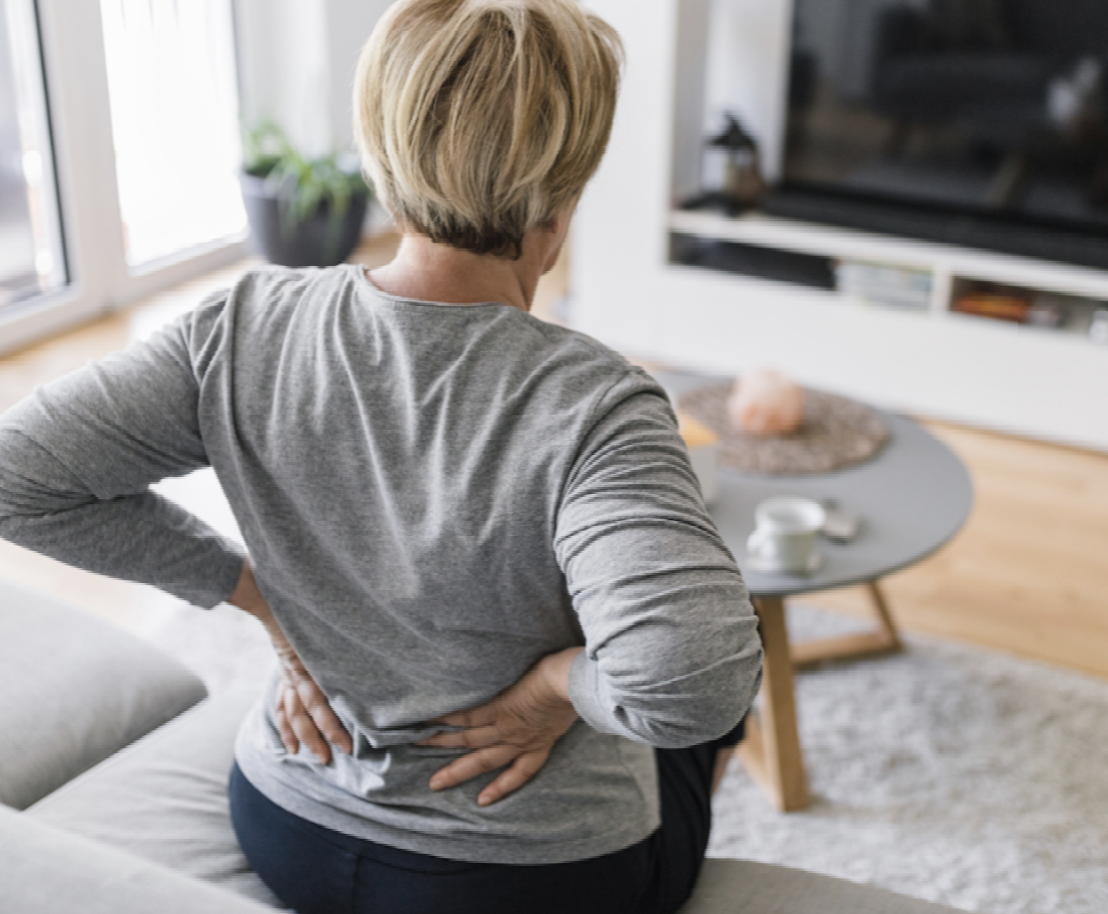Lower backache is a health condition that predominantly occurs in people aged 60 or more. Unfortunately, it can present with severe pain and disability.
Before discussing the risk factors for lower back pain and its remedies, let’s look at the main pathological process of old-age backache.
Pathology of lumbosacral pain in old age
Although it can also occur as a consequence of other spinal diseases, the most common pathology is the spine’s wear and tear (degeneration). The human spine consists of about 32 vertebrae, jelly-like discs between the vertebrae, and rope-like ligament. The spine also has nerves originating from the spinal cord, which run very close to the vertebra’s bodies.
As the spine ages, these structures lose moisture and resilience, making the spine less effective and painful.
Causes and risk factors
Apart from the degenerative processes, there are other common causes of low back pain.
- Spondylolisthesis (Slipping forward of one vertebra over the adjacent vertebrae, leading to nerve pinching and pain)
- Spinal stenosis
- Spinal osteoarthritis
- Spasms of spinal muscles
We may also have some risk factors that can make us prone to lumbosacral pain in our elder years, such as lack of physical activity, obesity, wrong spinal postures, female gender, dementia, previous spinal injuries, spinal infections, and others.
Why are females more affected by lumbosacral pain?
Over half of perimenopausal women have reported symptoms of musculoskeletal pain. The cause of lumbosacral pain in older women is estrogen deficiency, leading to osteoporosis. In osteoporosis, the vertebral bone’s mineral density gets reduced; thus, the vertebra may fracture upon physical stress.
General remedies for low back pain
- Heat and Cold Therapy
When a sudden bout of pain occurs in the lumbar or sacral region of the spine, an ice pack or hot pad can be used to manage it. Heat and cold therapy can alleviate spinal pain and reduce local inflammation.
- Physiotherapy and spinal exercises
Physiotherapy and spinal exercises can strengthen the spine and reduce back pain. These can also improve the joint movements of the spine and manage musculoskeletal spasms in the lower back.
- Weight reduction
Maintaining a healthy weight can decrease the physical stress on the lumbosacral joints of the spine. For example, dropping even four pounds can reduce about sixteen pounds of pressure from the spine.
- Right posture
Keeping the correct posture can prevent chronic low back pain. Also, we should adjust our work table to a comfortable level and avoid standing in the same position for a long time.
- Over-the-counter (OTC) painkillers
Painkillers such as paracetamol, ibuprofen, or naproxen can also be used for mild-to-moderate low back pain in old age. However, these pain relievers shouldn’t be used for a long time unless prescribed by a physician.
Take home
Old age makes us prone to lower back pain as aging results in the wear and tear of the spine. Other risk factors for lumbosacral pain may include increased weight, spinal injuries, lack of physical activity, and wrong spinal posture. Heat and cold pads, physiotherapy, OTC pain relievers, and weight reduction can help manage lower back pain in the elderly. Unified Caring Association (UCA) has also mentioned some exercises on its website that can strengthen the spine.
References:
- Tenny, S., & Gillis, C. C. (2021). Spondylolisthesis. In StatPearls [Internet]. StatPearls Publishing.
- https://unifiedcaringcommunity.com/perimenopausal

